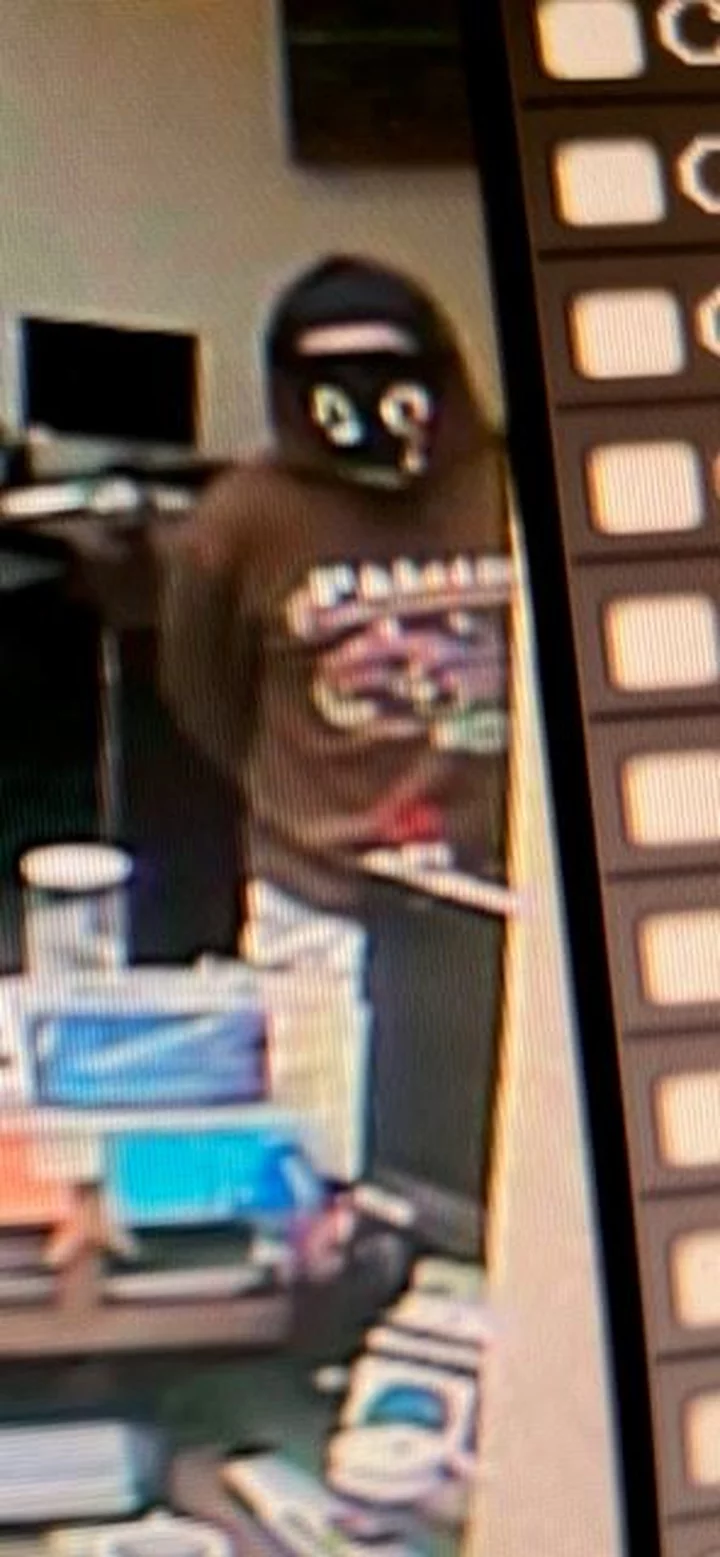Arcata Man Arrested on Suspicion of Sexually Assaulting Two Children, Sheriff’s Office Says
LoCO Staff / Thursday, May 11, 2023 @ 4:35 p.m. / Crime
Press release from the Humboldt County Sheriff’s Office:
In late February of this year, the Humboldt County Sheriff’s Office Major Crimes Division received information regarding an adult male suspected of sexually assaulting two (2) juvenile females who were ages nine (9) and ten (10) at the time of the incident. The male was not a family member but was known to the female juveniles.
During the course of the investigation, with the assistance of the Humboldt County Child Abuse Services Team (C.A.S.T.), the suspect was identified as Lucas William Russell, age 21 of Arcata.
On 5/11/2023 at about 10:00 a.m., Investigators with the Humboldt County Sheriff’s Office Major Crimes Division served a Search Warrant and Arrest Warrant at a residence in the 11000 block of West End Rd. in Arcata. Based upon statements and evidence located during service of the Search Warrant, Investigators confirmed that Russell had assaulted the two (2) minor juveniles.
Russell was arrested without incident and booked into the Humboldt County Correctional Facility on felony charges of Sexual Intercourse with a Minor Age 10 or Younger – 2 counts (PC 288.7(a)), False Imprisonment (PC 236), and Dissuading a Witness/Victim by Implied/Threatened Force or Violence (PC 136.1 (c)(1)).
The case is being submitted to the Humboldt County District Attorney’s Office for prosecution. Russell’s bail has been set at $1,500.000.
Anyone with information about this case or related criminal activity is encouraged to call the Humboldt County Sheriff’s Office at (707) 445-7251 or the Sheriff’s Office Crime Tip line at (707) 268-2539.
BOOKED
Yesterday: 11 felonies, 16 misdemeanors, 0 infractions
JUDGED
Humboldt County Superior Court Calendar: Yesterday
CHP REPORTS
Us101 / Bald Hills Rd (HM office): Trfc Collision-Unkn Inj
444 Mm299 W Tri 4.40 (RD office): Trfc Collision-No Inj
ELSEWHERE
RHBB: Catholic Hospital Denies It Violated CA Law, Attorney General Makes Case For Abortion Protection
RHBB: Prescribed Burn Planned for the Huestis Rock Unit, Ft. Seward Area
RHBB: Green Diamond Prescribed Burning Notification for Today
McKinleville Man Arrested for Possession of Child Pornography After Weeks-Long Investigation, Sheriff’s Office Says
LoCO Staff / Thursday, May 11, 2023 @ 3:58 p.m. / Crime
Press release from the Humboldt County Sheriff’s Office:
In late March of this year, the Humboldt County Sheriff’s Office Major Crimes Division received information from the National Center for Missing and Exploited Children (NCMEC) regarding a subject in the Humboldt County area suspected of possessing more than 50 images depicting child pornography.
Through a lengthy investigation, the suspect was identified as Brandon Markus Allen Sampanes, age 31, of McKinleyville. During the course of the investigation, it was discovered that Sampanes was in possession of additional images and videos depicting child pornography.
On May 11, 2023, at about 7:00 a.m., Investigators with the Humboldt County Sheriff’s Office Major Crimes Division served a Search Warrant and Arrest Warrant at a residence in the 1100 block of Killdeer Rd. in McKinleyville. Sampanes was arrested without incident. Based upon statements and evidence located during service of the Search Warrant, Investigators confirmed that Sampanes was the person in possession of the child pornography.
Sampanes was booked into the Humboldt County Correctional Facility on felony charges of Possession of Child Pornography (PC 311.11(c)(1)). The case is being submitted to the Humboldt County District Attorney’s Office for prosecution.
Anyone with information about this case or related criminal activity is encouraged to call the Humboldt County Sheriff’s Office at (707) 445-7251 or the Sheriff’s Office Crime Tip line at (707) 268-2539.
Sheriff’s Office Releases Digital WANTED Poster on Last Week’s Hoopa Bank Robbery Suspect
LoCO Staff / Thursday, May 11, 2023 @ 1:43 p.m. / Crime
Press release from the Humboldt County Sheriff’s Office:
HHUMBOLDT COUNTY SHERIFF’S OFFICE
INFORMATION
WANTED
DO YOU RECOGNIZE THIS SUSPECT?
The Humboldt County Sheriff’s Office is seeking information about an individual in relation to an ongoing investigation into the robbery of a bank in Hoopa that occurred last week.
Anyone with information regarding the suspect’s identity or location is encouraged to call the Humboldt County Sheriff’s Office at (707) 445-7251 or the Sheriff’s Office Crime Tip line at (707) 268-2539, and reference HCSO Case# 202302071.
(VIDEO) HUMBOLDT OUTDOORS: Ray Olson Traverses Jolly Giant Creek From Its Headwaters in the Arcata Community Forest to Humboldt Bay
Isabella Vanderheiden / Thursday, May 11, 2023 @ 12:14 p.m. / Humboldt Outdoors
###
Self-taught Humboldt documentarian Ray Olson is back with another edition of his inspirational travel series “Humboldt Outdoors.”
In the first installment of this multi-part series, Olson takes us to the headwaters of Jolly Giant Creek, located in the Arcata Community Forest, and follows the stream across the campus of Cal Poly Humboldt. From there, the creek flows under downtown to the Arcata Marsh and Wildlife Sanctuary and ends at Humboldt Bay – spanning a distance of almost four miles.
Olson links up with a couple of friends on his adventure – licensed drone cinematographer Jake Stoll and former Arcata Environmental Services Director Mark Andre.
“I think what makes this creek interesting is a lot of its history and it being a water source for the city,” Andre tells Olson. “It links together two of Arcata’s biggest open space areas – the community forest and the [Arcata Marsh and] Wildlife Sanctuary at Humboldt Bay. It’s part of this community’s identity.”
Watch the full video to learn more about Jolly Giant Creek, the Arcata Community Forest’s complex network of trails and the value of having not one, but FIVE trout streams within the Arcata City Limits.
“Let’s get this jolly adventure underway!”
###
PREVIOUSLY:
- (VIDEO) HUMBOLDT OUTDOORS: Ray Olson Goes Back in Time to Teach Us About the History of Earth Day
- (VIDEO) HUMBOLDT OUTDOORS: Ray Olson Takes a Peek at the Timber Heritage Association’s Future Railroad Museum in Samoa
- (VIDEO) HUMBOLDT OUTDOORS: Ray Olson Takes Us on a Camping Trip to Prairie Creek Redwoods State Park
- (VIDEO) HUMBOLDT OUTDOORS: Venturing Inside the Loleta Tunnel
- (VIDEO) HUMBOLDT OUTDOORS: Ray Olson Cracks the Case on the Mysterious Arcata Community Forest Wood Carvings
- (VIDEO) HUMBOLDT OUTDOORS: The Ruins of Humboldt County’s First Lighthouse
- (VIDEO) HUMBOLDT OUTDOORS: A Look at the Historic Ghost Town of Falk
- (VIDEO) HUMBOLDT OUTDOORS: The Covered Bridges of Humboldt County
EUREKA SHOOTING: Suspect in Custody After Shooting on California Street Last Night; San Francisco Man Booked on Attempted Murder Charges, Eureka Police Say
LoCO Staff / Thursday, May 11, 2023 @ 11:46 a.m. / Crime
Press release from the Eureka Police Department:
On May 11, 2023, at approximately 12:25 a.m., the Eureka Police Department (EPD) received a report of an argument followed by the sounds of gunshots in the 1800 block of California Street. Our dispatch center received a call from the victim in this investigation who stated a suspect had fired a handgun at them, while they were engaged in a verbal altercation, shooting out the back window of their vehicle. No one was injured during this incident. This was not a random act of violence and was targeted only at the victim.
After the shooting, the victim began following the suspect and provided vital information about the suspect’s vehicle and direction of travel. A county-wide “be on the look out” was issued for the suspect and vehicle.
At approximately 12:39 a.m., a Humboldt County Sheriff’s Deputy located the vehicle in the Cutten area and attempted an enforcement stop. The vehicle failed to yield and a pursuit of the vehicle ensued. The pursuit traveled back through Eureka and concluded near Broadway and McCullens Avenue, when the suspect’s vehicle became disabled. The suspect was taken into custody without any further incident.
The suspect was identified as James Clayton Atkins, 39 years old, from San Francisco, California. Atkins was transported and booked at the Humboldt County Correctional Facility on two (2) counts of Attempted Murder. This is an ongoing investigation and additional charges are expected to be filed against Atkins.
UPDATE: APD, Humboldt County Mental Health Responded to Domestic Disturbance in Valley West Wednesday Night
Stephanie McGeary / Thursday, May 11, 2023 @ 11:37 a.m. / News
PREVIOUSLY:
- ”Arcata Courtyard Circle barricaded subject incident update on conditions: The situation is still ongoing,” Scanner Traffic Indicates.
###
After receiving a call at around 7 p.m Wednesday night about a domestic disturbance at the apartments on Courtyard Circle in Arcata, the Arcata Police Department responded to find an individual who was having a mental health crisis and threatening to kill himself.
This morning Lt. Todd Dokweiler of the APD gave the Outpost an update on the situation, saying that the individual has stabilized and that APD is “periodically checking in” on the individual. In addition to APD officers, a representative from Humboldt County Mental Health responded to the scene Wednesday night, Dokweiler said. No one entered the residence, but after talking to the individual through the window until about 1 a.m., responders determined that the individual had stabilized, and that the best course of action would be to leave the scene.
Residents in the area were not evacuated, Dokweiler said, but were made aware of the situation and advised to leave the area if they felt it was necessary. Neighbors and the property manager have also been advised to contact APD if there are any additional disturbances. Responders are also in touch with the individual’s family, Dokweiler said.
At one point, there was a report of the individual wielding a kitchen knife, but there were no firearms reported, and there were no reported injuries of the individual or anyone else. Once it is deemed appropriate, the individual will ultimately be taken into custody for further evaluation, Dokweiler said.
Eureka Police Officially Arrest One Suspect in April Assault, Police Chase That Resulted in Harris Street Shootout
LoCO Staff / Thursday, May 11, 2023 @ 10:23 a.m. / Crime
PREVIOUSLY:
###
Press release from the Eureka Police Department:
On May 10, 2023, Jesse Chakchak Widmark was arrested and booked into the Humboldt County Correctional Facility. This arrest resulted from his involvement in the April 18th critical incident that occurred at the intersection of Harris and Dolbeer Streets in Eureka.
Jesse Widmark was arrested for the following charges:
- Attempted Murder of A Peace Officer, Brandishing a Firearm in the Presence of a Peace Officer, Felony Obstruct/Resist a Peace Officer, Robbery, Assault with a Deadly Weapon Other than a Firearm and Child Endangerment.
Brandon Widmark, the second suspect in this investigation, is still receiving medical treatment and will booked upon his discharge from treatment.






